Kylie Minogue Swinging Safari
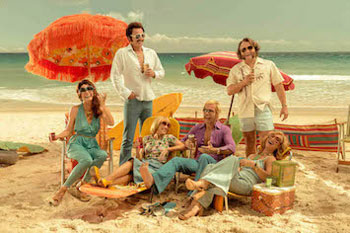
1970s Australia
Cast: Guy Pearce, Kylie Minogue, Asher Keddie, Julian McMahon, Radha Mitchell, Jeremy Sims
Director: Stephan Elliott
Genre: Drama
Rated: M
Running Time: 96 minutes
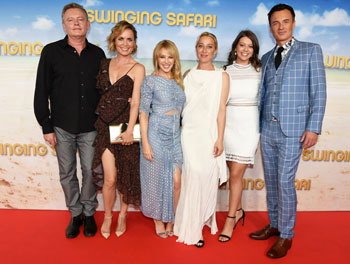 Synopsis: 1970s Australia: 14 year-old childhood friends Jeff and Melissa discover a 200--‐ton blue whale washed up on their local beach, and it's the biggest thing that's ever happened in Australia. But it's not nearly as big as what is about to take place behind the closed doors of their quiet suburban cul-de-sac. Their parents are preparing to join the sexual revolution (ten years too late) by throwing a key party.
Synopsis: 1970s Australia: 14 year-old childhood friends Jeff and Melissa discover a 200--‐ton blue whale washed up on their local beach, and it's the biggest thing that's ever happened in Australia. But it's not nearly as big as what is about to take place behind the closed doors of their quiet suburban cul-de-sac. Their parents are preparing to join the sexual revolution (ten years too late) by throwing a key party.
And it all goes spectacularly wrong.
The aftermath of a sexually charged -fondue night' unleashes a tit‐for‐tat war of suspicion, jealousy and rage. With the adults at war, the kids on the block are left to their own devices and run amok, taking their own street fight to comical extremes. It's parent versus parent, kid versus kid, and pet versus pet.
Desperate to make sense of it all, our young heroes Jeff and Melissa are determined to help the whale escape, and, in turn, start planning their own. If the whale is going, they're going with it. But nothing will move the dead beast. The whale is stuck. Just like Jeff and Melissa.
When Jeff's mother goes way too far in the war, police are called and the whole street goes into lockdown. Joint family meetings are held, and the group consensus yields a terrifying result; embarrassed by their childish behavior, the adults must stop carrying on like infants by helping their kids join the sexual revolution alongside them.
Jeff and Melissa are forced to attend the annual high school dance, at which their wonderfully misguided parents have been grooming them to go -all the way'. Trapped, the young friends escape the dance for one final attempt to save the whale, only to find that the city council are well underway with their own solution. The Mayor is going to blow up the whale with as much dynamite as he can lay his hands on.
In an explosive finale, the parents, the kids, the street and the whole suburb will be brought to their knees in a catastrophic downpour of blood and guts and guilt.
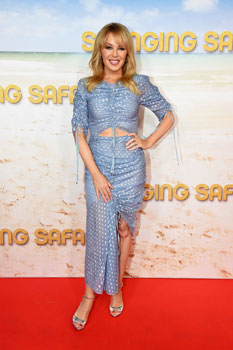 Swinging Safari
Swinging Safari
Trailer
Director's Statement
'Is there a childhood moment that defined who you are?"
Instead of celebrating this white elephant in the room, most folks stuff their answer on a very high shelf, hoping it will never again see the light of day.
Swinging Safari – my answer to this question – is celebrating this delirious jumbo in full trumpet. Wonderfully wrong, completely endearing and unintentionally hilarious.
The 1970s
A decade that Tom Wolfe christened the 'Me" Decade. After the explosive 1960s, which saw America tear itself apart over three wars, the sexual revolution and a bloody civil rights movement, the rising middle class reset the bar with the first wave of pure consumerism. If Richard Nixon could find a way to shave three minutes off your day, he'd 'K-Tel" the front and 'o-matic" the back. Television finally went global; the American dream began to seep out in all its bleeding NTSC glory. And therein lies a major clue – colour television was a decade old when it finally hit Australian shores; and that pretty much sums up the world into which I was born. Everything came to Australia 10 years late. And the hand-me-down Chinese whispers had gotten very lost in translation. 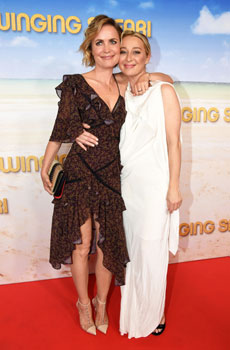 Australia of the 1970s was a spectacular, rudderless mess.
Australia of the 1970s was a spectacular, rudderless mess.
After years of post‐war conservatism, Gough Whitlam came to power dead set on catching up with the world and, on certain issues, overtaking it. You can't throw the rulebook out so quickly without some serious repercussions. My picture-perfect teens came with one incredibly game-changing curve ball – money. Much has been said about the working class, Puberty Blues world of Oz, but nobody has said much about the nouveau riche, mainly because the participants are still too embarrassed to talk about it. Thankfully, I'm not. This is the film of the period that defined me.
The world I grew up in was about bigger -n' better homes, cars, pools, pets and shifting morals.
Bob (and Carol and Ted and Alice) was your Uncle, and he would say we had too much time on our hands. All the shenanigans centred around the beach, where we buried ourselves to the necks in Eskis, surf mats, baby oil and skin cancer, whilst gorging on fondue, cask wine and that new culinary sensation, Kentucky Fried Chicken. The mood was gay (in its original context) and the sand was safe. What could go wrong? In hindsight, pretty much everything. My parents were flicking through Penthouse magazine trying to find some semblance of a plot. As the moral mercury sailed into the danger zone, my retreat was cinema. Or, more perfectly put, escapism. I wish I could brag about a healthy diet of European films, but alas, the first mega mall multiplexes were opening, feeding impressionable young minds with an endless stream of American bubblegum. The genre that really ticked my boxes was the disaster movie. Good-looking white people getting drowned (The Poseidon Adventure), burned (The Towering Inferno), bombed (Airport 1-4), or eaten (Jaws). These blockbusters were the first kickback against the new consumerism. And somewhere, alone for all those hours in the dark, the penny dropped – my white picket fence was a disaster waiting to happen.
The fashion was wonderfully atrocious.
This is a world in which money could buy happiness. Shame nobody sold a rulebook to go with it. Polyester was the material of choice and the colours were bright. Men and women were both wearing too-tight pants and ankle-snapping platform shoes. Suits were in: the pantsuit; the safari suit; the leisure suit; and the tracksuit. Every woman had a cowl-neck sweater and every man had a striped v-neck velour shirt. Chest hair, medallions, polyester, butterfly collar bell-bottoms, skin-tight t-shirts, sandals, patterned dress shirts, sideburns and, yes, tennis headbands. Kids proudly wore the new synthetic Speedo swimsuit, which dutifully filled with sand after being pummelled for eight hours in the surf (unsupervised).
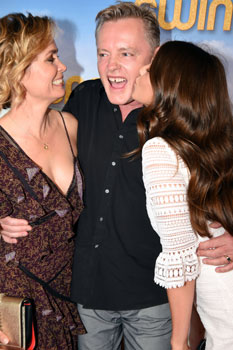 The music was genuinely awful.
The music was genuinely awful. After the sensational 1960s, when Dylan ruled the earth, the mid 70s flat--‐lined until disco reared its head. Who could forget classics such as Torn Between Two Lovers? Disco Duck? Convoy? The grating horns of Herb Alpert and The Tijuana Brass? Everything Tony Orlando and Dawn ever recorded? Our record selector soundtrack will constantly stick on K-Tel, the gadget importer, which thankfully recorded thousands of covers, together for the first time on this deluxe two-record disc! But wait! There's more!
The Tone
The tone is a well-balanced act. There are two obvious angles through which to view the 1970s. You could take the William Friedkin-style (down and dirty) documentary route, but that kinda grit doesn't serve comedy well. The other extreme is a more comical, stylized approach, where the flares and sideburns never stop growing. But this can detract from the very real drama of the piece. The answer lies with Goldilocks – not too hot, not too cold, and just right. Whenever we're stuck on a picket fence, the answer will always be the truth. Because the truth was pretty funny.
The Team
Al Clark and I have talked about re‐teaming since Priscilla. This is a man who teed-up VHS cassettes on specific scenes of landmark films as tuition right though the shoot of Priscilla. Becoming friends first (co-workers second), not a week has gone by where we have not made each other question or laugh. The original recipient of the Swinging Safari pitch, it was Mr. Clark who finally got me over the line. I didn't want to write it. I was too frightened. After decades of coaxing, he finally sat me down in front of a Mac and gently guided my hands to the keyboard.
Lizzy Gardiner is a childhood friend who shared the landscape with me. Somehow, we survived 1975 and remained close. An aspiring fashion designer, she came to me in the early 80s looking for work on a film, and I landed her a gig as standby on the terrible kitchen sink drama on which I was the 2nd assistant director. The highlight of that shoot was watching Lizzy leave all the wardrobe on the ground behind a 4WD and watching the grips and electricians drive all over it. Fast-forward a decade and there she was, collecting an Academy Award in a credit card dress (that American Express had knocked back for Priscilla). Swinging Safari is as much Lizzy's childhood as it is mine.
Colin Gibson and I worked around each other through the learning curve that was 10BA, culminating with Priscilla. An insatiable young art director, Colin showed very little fear wearing very little underpants. His specialty was telling directors exactly what he thought of their sub‐standard tripe, and I knew, after our first tour, he was the production designer for me. It's been years since we've had the chance to re‐team, his career having been hijacked by Dr. George Miller, with an army of talking pigs and tap‐dancing penguins. When Fury Road was finally put to bed, Colin was mine again.
All mine. Sue Blainey and I studied film editing together as 17 year-olds. We share the distinction of being kicked out of the same film school on the same day. Sue went to the United States to work under Richard Francis-Bruce on The Witches Of Eastwick, and never came home -til I lured her back with a big pink bus. In the ensuing years, she has developed the fastest hands in the business (according to J.J. Abrams, when they were cutting Lost). Sue and I share an identical sense of humor, serving us well on Priscilla, Easy Virtue and A Few Best Men. She is my second set of hands and silly barometer.
Jamie Hilton and Ester Harding are the new kids on the block. We found each other on a gin palace in Cannes. They were engaging, funny and incredibly hungry. Not for the flaccid canapés on offer, but for the next Priscilla. Al had talked me to the typewriter, but I was still reticent. The concept had only been shared with close‐knit family, possibly because I was shit scared that a younger audience would reject such personal material. Jamie and Ester – mere kittens in film time – loved it. And together, they put my start gun in the air.
Swinging Safari may read like a film about lost kids, but truth be told, it's a love letter to lost parents. They did the best they could with the tools they were handed. So what if Forum magazine and Number 96 were blunt instruments?
They made me who I am today.
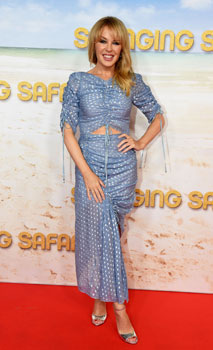 About The Production
About The Production
Background To The Production
Baby Boomers often reminisce about those halcyon days before computers, mobile phones, electronic games, yearning for the joys of being a child playing out in the street until the sun went down and mothers called out: 'Dinner's ready!"
In the 1970s kids had so much freedom. Their parents had brought children into the world in the Australia of the sixties and were now adjusting to lives of responsibility, raising their families in their new brick veneer suburban homes. But were they adjusting, really? Wanting to hang on to their own liberties and offer their kids a wide‐open view of the life and times they were born into, but at least appear to be sensible role models measuring out discipline they had no idea how to instil, was a tension stickier than a malfunctioning K-Tel Record Selector.
And so with all this freedom, the children of the seventies fumbled their way through the obstacle course that was adolescence while their parents grappled with the reality of child‐rearing – when they could fit that in around fondue parties, couples swinging and, yes, going out every day to earn a living to support the family they possibly never really wanted.
Writer/director Stephan Elliott was one of those wild and free seventies children and his memories are bittersweet. 'Swinging Safari is the tale of a little boy and a little girl lost in a wayward world of irresponsible parenting," he says summing up this autobiographically inspired tale, both hilarious and sad, of adults who are still kids, and kids trying to figure out how to forge a path to adulthood.
'My childhood is full of memories of children on fire at parties while the parents were too drunk to do anything about it," he recalls without a hint of irony.
His 1994 film The Adventures of Priscilla, Queen of the Desert – a memorable, magical and eternally whimsical view of LGBT lives told through the travails of drag queens on a road trip – set the bar for the riotous tone of his future work, and Swinging Safari might well re‐set the bar for on-screen outrageousness. But the deeply personal back-story imbues this new film with a tenderness that pervades every frame and every performance. If Swinging Safari is a family drama gone darkly comic, the familial sensibility on set was absolutely essential to the final product – cast and crew, children and animals, and the indomitable Stephan Elliott as father figure at the helm.
"
Swinging Safari reunites Stephan Elliott with key personnel from Priscilla ‐ producer Al Clark, production designer Colin Gibson, costume designer Lizzy Gardiner, editor Sue Blainey and composer Guy Gross ‐ and adds sought‐after hair and makeup designer Rick Findlater and cinematographer Brad Shield. Through and through a Stephan Elliott film, it is also markedly a product of his collaboration with that tight‐knit production team and their combined fearless creative genius. The Academy Award® wins and nominations between these earnestly eccentric visionaries are just the icing and sprinkles on the cake that give Flammable Children the excitement, vivacity, playful irreverence and heartfelt tenderness that Stephan Elliott's story demands.
Adding to that mix is a quintessentially Australian cast whose members have garnered international acclaim for decades, headed by Guy Pearce and Kylie Minogue, bringing their still palpable chemistry from working together 30 years ago on long‐running TV series Neighbours. Radha Mitchell and Julian McMahon, along with Asher Keddie and Jeremy Sims, join Guy Pearce and Kylie Minogue to make up the three couples on their wild swinging safari, while the two children trying to make sense of the nonsensical world around them are played with poignancy and insight by Atticus Robb and Darcey Wilson. Add the charisma of renowned actor Jack Thompson, a large cast of extras in tight Speedos, an old dog, a beached whale, and some hilarious crotch‐splitting costumes, and the mirth and mayhem burst from the screen like a veritable Rock Explosion.
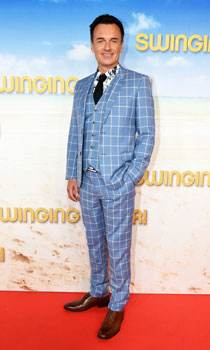 Veteran producer Clark had been waiting for the chance to work with Stephan Elliott on something that could recapture the Priscilla magic and take it to a whole new level. Says Clark, 'Although we have remained close friends over the years – while living in different countries and exchanging unsolicited advice and support – the perfect reunion project has always been elusive. Until now.
Veteran producer Clark had been waiting for the chance to work with Stephan Elliott on something that could recapture the Priscilla magic and take it to a whole new level. Says Clark, 'Although we have remained close friends over the years – while living in different countries and exchanging unsolicited advice and support – the perfect reunion project has always been elusive. Until now. 'Swinging Safari – a poignantly comic account of a crucial week of change in a mid-1970s Sydney childhood – is a script that appeared to jump out of Stephan Elliott's head fully formed, its authenticity undeniable, its good-hearted hilarity reinforced by the idiosyncrasies of personal experience. Whichever way you look at it – as nostalgia, as anthropology, as satire – it is a perfect capsule of a time and place, an unusual love letter to a world of careless parenting, constant sunburn and dangerous unsupervised activities, as culturally specific yet transcendent of nationality as Priscilla triumphantly revealed itself to be two decades earlier."
Oscar-winning costume designer Lizzy Gardiner has worked with the writer/director on all his projects and Swinging Safari, a story that refers so directly to the beginnings of their friendship as adolescents in the seventies, offered her relief after thematically weighty movie projects like Mel Gibson's Hacksaw Ridge. She was drawn to the pace and the pure joy of working with her great friend.
'It was just one of the great moments that you have in your career, that I almost constantly have when I work with Stephan Elliott," Lizzy Gardiner says. 'Working with Stephan Elliott is like no other. He is actually very good at communicating and he is very decisive. He knows what he wants, and we almost always agree. If I finally say to him, no you're wrong, or you're going too far, which is not very often, that is the beauty of Stephan Elliott, the fact that he does go too far. So why hold him back? What's that saying? If you can't handle the heat, get out of the kitchen. So if you can't handle the heat of Stephan Elliott, then get out of the kitchen. Don't be there."
Production designer Colin Gibson was also readily enticed back after a long period of working on films with other directors, notably George Miller, earning him an Oscar for Best Achievement in Production Design on Mad Max: Fury Road. 'Working with Stephan Elliott is always a great joy. He's full of energy, there is a natural proclivity for ADHD, which is always fun. Lots of running, yelling, involvement, connection. As long as you can keep up it's a fun ride."
'There's this great quote that says, hire the best people you can and get out of the road," remarks Rick Findlater, who supervised hair and makeup for the film, joining Stephan Elliott for the first time. 'Well that's what he does. He just let us go crazy, and pulled us back when he needed to and pushed us a little bit harder. He lets people be creative, and in this business it's so refreshing. So whenever he wants to do a film and he wants me back, if he ever wants me back, I'm keen. He's just been amazing, really amazing."
Guy Pearce, whose international career was launched by his star turn in Priscilla under Stephan Elliott's direction, was excited to be reunited with him. 'I love him, I just love him, and Lizzy Gardiner of course," Guy Pearce says. 'I think it's really nice to have experienced anything with somebody, to go away for years and then come back together again and feel on some level like nothing has changed, even though you've changed a lot because you've developed and grown and you've worked on all sorts of other things. But there's a respect there, and there's also a shorthand language. And there would be a little line of dialogue or I'll improvise something, and it'll trigger something that sounds like what we said in Priscilla, so Stephan Elliott and I will both jump on board and say it, which then makes everyone else laugh and so it's a real treat."
 Kylie Minogue was pulled in not only for the chance to work on a Stephan Elliott film, but also to work again with Guy Pearce. 'I just related to so much in the script, I thought it was truly funny and touching, and of course I knew Stephan Elliott's work and I heard that Guy Pearce was attached, so it was a no brainer for me," she says. 'I have adored working with Stephan Elliott, absolutely, he's a big kid. I've been fascinated watching him on set and I don't know if he sleeps, how he sleeps. He's so present the entire time; he's against time all the time."
Kylie Minogue was pulled in not only for the chance to work on a Stephan Elliott film, but also to work again with Guy Pearce. 'I just related to so much in the script, I thought it was truly funny and touching, and of course I knew Stephan Elliott's work and I heard that Guy Pearce was attached, so it was a no brainer for me," she says. 'I have adored working with Stephan Elliott, absolutely, he's a big kid. I've been fascinated watching him on set and I don't know if he sleeps, how he sleeps. He's so present the entire time; he's against time all the time." Radha Mitchell was drawn back to Australia from her Los Angeles base because of the Stephan Elliott factor, and was intrigued and inspired by his style of direction. 'He's a very impassioned ringleader. He's a bit of a totalitarian. And he's got a real sense of control over the piece. At the same time the piece is very much alive and is creating itself each day. We're adlibbing a lot of the dialogue, but there's also a very precise sense of tone in the kinds of words that he used. So he's a really interesting director in that he's creating this space for freedom and chaos, and yet he's got a very tight handle on it."
For Atticus Robb, the teenage theatre actor whose debut film role sees him playing Stephan Elliott's younger self (known as Jeff in the film), the special relationship was at the heart of the work. 'He's an amazing director to work with. He's so approachable, he's a great guy, and I was kind of worried at the very beginning that it was going to be weird playing someone who was not only alive, not only like a real person, but is in that room behind the camera there with you. But it's totally not, because you can chat to him about what it was really like. It's amazing to have that sort of connection.
Al Clark sums up the uniqueness of being a part of a Stephan Elliott film. 'I've known him for 25 years, I know who he is and how he operates. And it's always remarkable, especially after a while of not working together, to see how fluid and exhilarating his way of directing is, how vivid the life that he communicates to actors and crew is. So they always know what they're doing, because their instructions are both direct and evocative enough to sow seeds for them."
"
Creating the character of Jeff, the awkward young boy who hides behind his home movie camera until adolescence kicks in 'and his world goes a little bit askew", was an homage to Stephan Elliott's younger self and the upbringing he survived.
'He starts pretty confident in himself at the beginning of the film, then gets incredibly lost as the rug gets pulled out from him, as his childhood gets taken away and adulthood starts coming on," Stephan Elliott reveals. 'And he very much comes to terms with who he is and what he is by the end of the film. Which is committed to being who he is with his camera and soldiering forward."
Stephan Elliott admits that he found it confronting to put his very personal experiences into Swinging Safari. 'It was also very liberating in its own weird way. And the joy of having such a strong cast on the floor; if I could see stuff that wasn't working I'd just wing it. The source is here, they'd look at me and I'd say, -Ok that's not working, try this, try this.' I didn't even have to make stuff up, I'd just go back into the memory banks, pick an event, pick some words, pick some people that I knew and threw them at the actors, and the actors got very good at taking that and going with it.
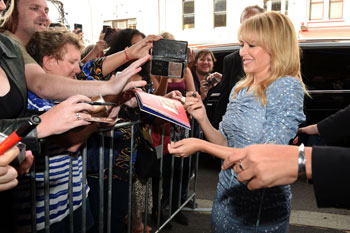 There were occasionally some days when I'd say, -Throw the script out the window – this is who you are, let's see what happens.' And I've never done that before. I was confident enough because all the source material had a truth to it." On one level Swinging Safari is a coming-of-age film about Jeff and his best friend Melly, whose character was inspired by his childhood friendship with Lizzy Gardiner. 'We've known each other since we were kids," Lizzy Gardiner elaborates. 'He's a little bit older than me, and so I held him up in incredibly high regard. He was very influential over me as a little girl, and I think we became friends because nobody else liked us. -Cause we didn't have any other friends. Stephan was great fun to grow up with. He nearly killed me quite a few times because he goes too far, but it was fun. And I survived."
There were occasionally some days when I'd say, -Throw the script out the window – this is who you are, let's see what happens.' And I've never done that before. I was confident enough because all the source material had a truth to it." On one level Swinging Safari is a coming-of-age film about Jeff and his best friend Melly, whose character was inspired by his childhood friendship with Lizzy Gardiner. 'We've known each other since we were kids," Lizzy Gardiner elaborates. 'He's a little bit older than me, and so I held him up in incredibly high regard. He was very influential over me as a little girl, and I think we became friends because nobody else liked us. -Cause we didn't have any other friends. Stephan was great fun to grow up with. He nearly killed me quite a few times because he goes too far, but it was fun. And I survived." If one of the climactic scenes in the film is indicative, Lizzy Gardiner is not exaggerating about Stephan Elliott's perilous pranks. Motorbike stunts, swimming pool shenanigans, and setting each other on fire were just some of the antics that children got up to while their parents weren't effectively parenting. Robb describes his favourite scene in the film, when a stunt in Jeff's homemade film goes wrong. 'There's a bit where Jerome, who's my best friend, gets set on fire during one of the stunts and that's meant to happen. But then it goes slightly too far, someone throws a petrol can at him and he catches it, throws it in the air, he gets it even more and sets a tree on fire, he sets a clothes line on fire, and I'm just filming this and we're trying to put him out with a hose, the hose isn't working, he ends up having to run up and jump in a pool, an above ground pool, and there are little sparks of flames everywhere. It's your dream to be able to be in a scene like that. It's crazy, it's chaos, it's amazing."
And life threatening. It's that lack of supervision that Stephan Elliott focuses on, the distraction of adults and the means by which their children have to fend for themselves. The bewilderment of the two lead children and their striving to find their way through the chaos is wrought strikingly by Robb and his young co‐star Darcey Wilson.
'At the very end, there's chaos happening all around us, and I extract myself from this insanity and I go over and I join Melly, who's sitting down, aside from everything else," describes Atticus Robb. 'And it's a very touching scene. It definitely shows that Jeff is not at all like Jerome and all the other guys, he's much more sensitive."
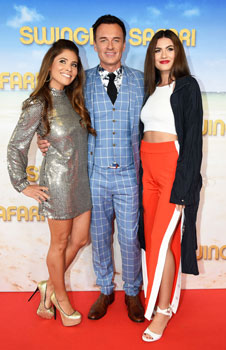 Al Clark observed the way the youngest stars of the film worked cohesively and made their characters truly spark. 'Atticus Robb and Darcey Wilson are quite extraordinary together; there's a mysterious biochemistry that makes certain combinations of actors work. Some of it is in the writing, but most of it is in them. If they don't have it, the writing isn't going to rescue it, and supplant it. So they did and we were fortunate."
Al Clark observed the way the youngest stars of the film worked cohesively and made their characters truly spark. 'Atticus Robb and Darcey Wilson are quite extraordinary together; there's a mysterious biochemistry that makes certain combinations of actors work. Some of it is in the writing, but most of it is in them. If they don't have it, the writing isn't going to rescue it, and supplant it. So they did and we were fortunate." The youth in the cast were endlessly amused by the vernacular of the seventies. Expressions like 'struth" and 'dead set" as well as 'rack off" were among their favourites. 'You moll. You slack moll. That's my favourite," says Darcey Wilson.
Meanwhile the six adults demonstrate their ineptitude in a never-ending sequence of horrifyingly farcical and inappropriate instances, such as introducing early teen boys to hard liquor, gifting a teenage daughter the contraceptive pill, and turning a fondue party into a 'swinging safari", oblivious to their being in full view of Jeff and Melly.
Jeremy Sims, playing Jeff's father Bob, refers back to the era. 'In Australia there was a great fear that this thing that happened in Europe and America in the late sixties and early seventies, this changing of the guard, this huge kind of revolution that took place, that somehow we missed it. That nothing changed here and that we were still living in the fifties. And so, certainly in the circles that my parents moved in, there was a sense of desperation that we'd better do something that we're seeing in the movies or reading in the magazines, because otherwise we're going to get left behind. And that's one of the principal motivations for the six of us, the six parents that hang out together. The sense that we should –'
'Get with the times!", Asher Keddie finishes the sentence. Asher Keddie plays Bob's wife and Jeff's mother, Gale. 'The authenticity of that time is so there. It has been so consuming because we have felt like we're living it. I love the honesty of tragicomedy, and this is just hitting it right on the head. So I was really excited to be a part of a film that was really unapologetic in that way."
Guy Pearce, who plays the good--‐looking 'dickhead", Keith Hall, married to Kylie Minogue's Kaye, points out the pinnacle moment in the adult characters' storyline, where the wives want to join this new sexual revolution. 'They want to sort of -let's shake things up, let's throw the keys in the bowl and let's get it happening!' And it happens, and we did that, threw the keys in the bowl. And you know as an actor when you've thrown the keys in the bowl, you've crossed the line. So that changed a few things. A turning point. And it's around a fondue, in a sunken lounge room, the strangest shape."
'With a shag pile," Kylie Minogue points out. And Guy Pearce nods. 'A shag pile carpet, and the Lazy Susan."
 Radha Mitchell's character Jo Jones is Melly's mother. 'Jo Jones is trying to keep up with the Joneses herself," Radha Mitchell explains. 'And I think definitely there's a mask over who she is. She's got a mystery, she's got a secret. I have no idea what it is. But she's fun. And she's a bit of a drag queen, she's hooked on prescription pills and she loves a cocktail, she smokes, she does what she wants, and it's her idea to have this soiree."
Radha Mitchell's character Jo Jones is Melly's mother. 'Jo Jones is trying to keep up with the Joneses herself," Radha Mitchell explains. 'And I think definitely there's a mask over who she is. She's got a mystery, she's got a secret. I have no idea what it is. But she's fun. And she's a bit of a drag queen, she's hooked on prescription pills and she loves a cocktail, she smokes, she does what she wants, and it's her idea to have this soiree." Jo and her husband Rick, played by Julian McMahon, 'pride themselves on their sexual prowess and their ability to have a good time all the time," says Radha Mitchell. Julian McMahon was very intrigued by his character, saying, 'Everything he does is extreme, his look, his clothing, the way he says things, he's kind of the breadwinner in the group, he's the wealthiest guy on the block. But he shocks me and I'm interested by him consistently. Just the way he raises his kids. Swinging Safari really encapsulates everybody that went through that sixties and seventies period and came out of it alive, because it was a period of such extremity that a lot of us are shocked that we're still here."
While Guy Pearce was charmed by the interweaving storylines of the film, from the giant whale that washes up on the local beach to young Jeff's filmmaking adventures, and of course those keys in the bowl and what that leads to, he was mostly driven by the characters and their effect on each other. 'I as an actor am focusing not so much on the plot of the film but the connection or lack of connection between all of these characters, and between us as parents and the kids. So I think there's a sort of a through-line storyline, but there's also just the dynamics, the way in which all our behaviours are affecting each other. And us as adults as parents realising that we're actually not parenting our kids very well at all, which is very funny but at the same time it's a little bit tragic as well, but in a Stephan Elliott kind of way."
" For a domestic drama set in suburbia, shot in the Coolangatta area of Queensland's Gold Coast, Swinging Safari proved more challenging to film than Priscilla had been in the harsh Australian Outback. 'I've never had a cast this big before," Stephan Elliott says. 'I've never had this many locations. In Priscilla there were 97 scenes. In Swinging Safari there were 200. And some of those scenes when you write the page that's five scenes on a page to cram them all in, that's five locations!"
He retains wonderment that he was able to pull it off. 'I thought, okay, by the time we get to production we'll have to pare it all back. But by the time Lizzy, Colin, Al and I got together, it was Colin who specifically said, -We can do this. We're going to have to lie, cheat and steal but we can do it.' So instead of slashing 90 scenes, which is what I would have done, we went for it. And I've never worked so hard in my life. I mean, the film looks enormous. The film looks absolutely huge."
He also describes how the filming style contributed to that look. 'We shot the film on very, very wide lenses because that's a kid's perspective of how big you thought it was. That's terrible for the actors, -cause you only get a close up of an actor on a wide lens like that, they're this far away from the glass, and they were very confronted with a camera in their face this big. But I got a close up of them on this massive wide lens. And that became a bit of a style right the way through, what I thought it looked like rather than what it did look like. And then once you were opening that, you go into a little bit of fantasy land, and then once you go into a little bit of fantasy land there's a lot of leeway to take it in a more childlike direction."
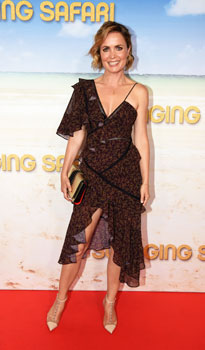 Cinematographer Brad Shield says that he had wanted to film with original camera lenses from the seventies that he had used on a film he shot in Los Angeles three years earlier, but found a more creative and expedient solution. 'I spoke to Guy Pearce at Panavision in Hollywood and, along with Simon Burton and his team at Panavision Gold Coast, they told me about a new system where they detune Primo lenses. While using the old lenses gives a softer image, less contrast and some interesting flares, the new system allows you to use new Primo lenses so it still looks organic with less contrast, and the flares are consistent, which doesn't happen with the old lenses." Describing in detail about the numbering of the detuned lenses and how he and Elliott chose the best grade of lens, Shield says, 'I loved the results, and it got the Alexa heading towards older film stocks in terms of colour and contrast and sharpness."
Cinematographer Brad Shield says that he had wanted to film with original camera lenses from the seventies that he had used on a film he shot in Los Angeles three years earlier, but found a more creative and expedient solution. 'I spoke to Guy Pearce at Panavision in Hollywood and, along with Simon Burton and his team at Panavision Gold Coast, they told me about a new system where they detune Primo lenses. While using the old lenses gives a softer image, less contrast and some interesting flares, the new system allows you to use new Primo lenses so it still looks organic with less contrast, and the flares are consistent, which doesn't happen with the old lenses." Describing in detail about the numbering of the detuned lenses and how he and Elliott chose the best grade of lens, Shield says, 'I loved the results, and it got the Alexa heading towards older film stocks in terms of colour and contrast and sharpness." Producer Jamie Hilton, working with Stephan Elliott for the first time, praises Colin Gibson for realising Stephan Elliott's large-scale vision. 'Colin Gibson makes, creates, substitutes and is a problem solver. Exactly what we needed to deliver Stephan's screenplay on a challenging budget."
The giant beached whale and its associated blubber proved to be one of the many 'huge" challenges of making the film. 'It was a great visual gag that Stephan Elliott had early on, which was that he needed a metaphor, he needed a time keeper," Colin Gibson explains, referring to the mammal's role in the film's overall design – thematically and visually. 'There's always that ticking time bomb that's happening, so this was one that washed up in the very opening frames of the film, and how they dealt with it, badly, was pretty much a metaphor for how the parenting was going at the same time. And it also gave everybody a focus, put us back on the beach, and tied us to one very large dead stinking thing."
For Lizzy Gardiner, it meant a lot of heavy lifting when it came to cleaning the numerous one-off pieces she had collected to dress the characters in. 'They all got hit with the whale blubber, which was so full on. It was over a hundred people in that scene. And then we had to clean it all. It's not the challenge that you want to hear, there is nothing glamorous about that, but we had to do it. We had to stand in a paddock with no lights in the middle of nowhere in Queensland somewhere and hose all those clothes down and try and get this blood and whale guts out of their clothes, and then have it ready the following morning at 5am for them to go and do it again!" She laughs raucously at the recollection. 'Queenslanders in swimwear running along the beach being covered in whale blubber!"
There were naturally great advantages to the Queensland shoot, particularly enticing to Guy Pearce, who spends long periods of time working outside of Australia. 'Shooting here is just a delight," he says. 'The fact that we get to go to Coolangatta and be on the beach all day, even when we're not shooting we can walk over there and have a swim, it's so fantastic.
To come back to Australia, which I miss terribly, and to come here, and enjoy this sunshine and enjoy what really feels Australian to me, which is the beach, is such a treat, and it also it allows me to remember that when I was a kid we used to go to Caloundra and up here to Surfers Paradise and the Gold Coast and Tweed Heads and various places, so a lot of that's coming back. And just the smell in the air, the sound of the surf, all that sort of stuff is really evocative."
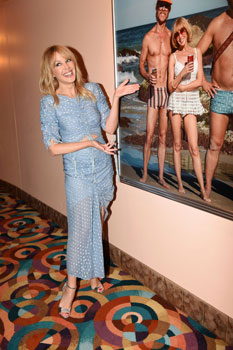 Kylie Minogue concurs. 'This could be a film that's set in a studio with green screen and you're imagining the world that you're in, but we're actually on the beach, in these characters' houses, we really have had to imagine very little. I've loved being here. It's not been a lot of free time, but the little bit of free time we're staying on the beach and it's been bliss, fantastic."
Kylie Minogue concurs. 'This could be a film that's set in a studio with green screen and you're imagining the world that you're in, but we're actually on the beach, in these characters' houses, we really have had to imagine very little. I've loved being here. It's not been a lot of free time, but the little bit of free time we're staying on the beach and it's been bliss, fantastic." Real houses were used as sets, each portraying the couples' lifestyles and circumstances. Location manager, Kathryn Metcalfe, notes that the team was lucky to find perfect homes for the families. 'Original 1960s and 1970s homes on the Gold Coast are a needle in a haystack and it was important to provide the right foundation for everyone to build upon. A film that is dominated by location shooting isn't common and it was a challenge that I wanted to take." The houses were all owner‐occupied and some were about to undergo renovation, so Metcalfe was strategic in securing those properties for filming in time.
'Gale and Bob's house is incredible," says Asher Keddie. 'It is a piece of work, it is so amazing, it's so original, it's a great shape, it's a great seventies shape. I love that location. I'm just so enjoying playing this character as well that I just want to be there, I want to be on the lawn, I want to be in the garage, I want to be in the white room and in my kitchen, and at my bar – of course it's my favourite location."
Kylie Minogue adds, 'On sets have been lots of magazines and bits and bobs, and I've flipped through the magazine and that is exactly what we look like. So I think that Stephan Elliott and art department and wardrobe, hair and makeup have done such a fantastic job to be authentic. It's a little heightened because it's Stephan Elliott's comedy world, but it's pretty much as it was, which is amazing."
Lizzy Gibson pulled together the crew that worked with him to fully realise Stephan Elliott's world. 'I had a great if small team on the Gold Coast of mostly local girls. Colin's Angels they were often referred to, a fantastic set decorator, art director and buyer/dresser, who brought their own love for the seventies and their own passion for the film, and I think that's visible in every frame."
Working closely with Stephan Elliott and Colin Gibson to take the production design vision through to the costumes, Lizzy Gardiner was taken back by the harsh authenticity when she arrived on set. 'When I got to Queensland and I saw the three locations where the three different families lives, it was pretty shocking. There was the Kylie Minogue and Guy Pearce location, which was so terrible. And then I just realised that a woman who lived in that house would never get out of her nightie. You know. It was just such a mess. And so run down and just dreadful, like it smelled."
Accordingly, Lizzie Gardiner gave Kylie Minogue's character Kaye an unsightly nightgown to wear in many of her scenes. 'So I thought, god I hope Kylie Minogue's going to be okay with this. Anything could have happened. Turns up, she takes one look at the nightgown and she goes, -It's perfect.' And she literally wears one or two horrible hideous polyester nightgowns for the whole film!"
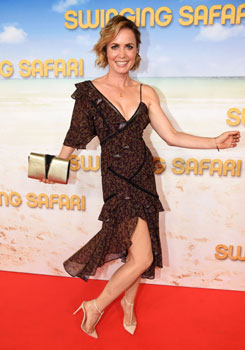 Gardiner sourced the outfits locally in Queensland and in New South Wales from vintage collectors – hoarders in fact – as well as at trusty St Vincent De Paul shops. From Guy Pearce's 'disgusting too-tight shorts" to Asher Keddie's lurid pink suit, Lizzy Gardiner has a story to tell for just about every costume on the lead characters. Her favourite story is about Jeremy Sims' character Bob's safari suit.
Gardiner sourced the outfits locally in Queensland and in New South Wales from vintage collectors – hoarders in fact – as well as at trusty St Vincent De Paul shops. From Guy Pearce's 'disgusting too-tight shorts" to Asher Keddie's lurid pink suit, Lizzy Gardiner has a story to tell for just about every costume on the lead characters. Her favourite story is about Jeremy Sims' character Bob's safari suit. 'The story about him is that he turned up really late for his fitting, and we fitted him over a weekend, and we were all exhausted. He just kept missing planes and stuff like that. So he wears this dreadful flesh coloured pants suit in the film. But I only really put that out as a joke to get him back for making us work all weekend. It was so tight that it would just constantly split around his balls. It's the ugliest thing I've ever seen in my life and it's skin toned. I was only joking, and he put it on, and I was like, -So what do you think, Jeremy, for the party?' And he said, -I think it's perfect.' And I thought, what? So he wore it, and he ended up having to wear that thing for I don't know how many days in Queensland heat under lights. He would have had burns on his body from the nylon! I felt really guilty. The smell of the truck with all of that polyester, and the smell of B.O., because it never comes out, it was just disgusting, so funny."
The wigs were also an essential part of the overall style, so Lizzie Gardiner was glad to be working with Rick Findlater, whose Oscar-nominated hair and makeup work defined the looks of Peter Jackson's Lord Of The Rings trilogy among other blockbuster films. Rick Findlater was eleven years old during the period Swinging Safari is set and remembers the era with pristine clarity. 'Stephan Elliott said, -I just want you to bring some of your family into the film.' So as soon as he said that it was a no brainer. I just pictured my aunty and my uncle and I can name all the characters of this film – my family are going to kill me – but there are totally specifics from the character to relatives of mine."
Kylie Minogue's look as downtrodden wife and mum Kaye was, Rick Findlater says, 'this iconic element of weirdness" that Minogue fully embraced. Guy Pearce's Keith was all hair – handlebar moustache, extended sideburns and yellow-green colour. Every character's look was influenced by the costumes and set design for total cohesion in his or her personality. 'Lizzy Gardiner's costumes are magnificent so I kind of was guided by her brilliant work," Rick Findlater says. 'I'd known about Lizzy obviously since I saw her in the American Express dress at the Oscars, which was brilliant. And I knew she'd done a lot of films that I totally admired, like totally hands down Priscilla was outstanding. So I was really excited, and also nervous, because sometimes costume designers can be quite determined in what they like. Lizzy I found to be so open minded, helpful, gracious, and above all, just brilliant. I'd love to do every film with her. Just a nice easy‐going person that's so talented."
"
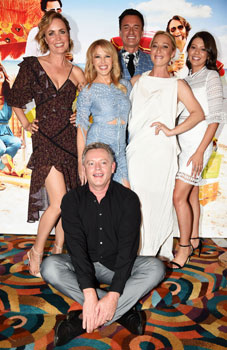 Everyone working with Stephan Elliott on Swinging Safari remarks on his unique voice, and that while the story is distinctly Australian, it has universal resonance in its themes of coming-of-age, parenting and an era of transformation, often through absurdity, but above all joy.
Everyone working with Stephan Elliott on Swinging Safari remarks on his unique voice, and that while the story is distinctly Australian, it has universal resonance in its themes of coming-of-age, parenting and an era of transformation, often through absurdity, but above all joy. 'A Stephan Elliot film has meaning, and this is too rare in our industry, here and abroad," says producer Hilton. 'It resonates a clear and heightened sense of style and an original voice. His brutal honesty, immediate familiarity, his depth of filmmaking and life experience, and his intensely funny and sharp intellect are all hugely enviable traits on which he draws as a storyteller and collaborator."
'I hope what they get is that – while they're enjoying it, while they're laughing at rude, crude and as politically incorrect as we were allowed, because the seventies, bless them, were a pathetically incorrect time" says Colin Gibson of what audiences can expect. 'It was good to go back somewhere where we could all relax. I think they can relax. They can draw a breath. And hopefully they'll also recognise a little of themselves or how they become themselves thanks to the seventies."
For the actors who were young children in that period, it is a fond look back over their shoulders that they hope audiences old and young will appreciate. 'It's an incredible recreation of the seventies in terms of the look but also the tone and the ethos and the great joy with which we did crazy stuff in the seventies that was unsupervised," says Jeremy Sims. 'Both unsupervised adults and unsupervised children. So if anyone has fond memories of the seventies then this film is really going to be something that they want to see."
'I think audiences will probably get quite a kick out of this film," agrees Guy Pearce. 'I think they'll get a kick out of the film in the same way we're getting a kick out of the film. The six adults on the film, we're having such fun reminiscing, we're having fun being silly, but we're also having great fun being taken back into this world. I think anybody of our age or older will also have the same experience when they watch the film. Stephan Elliott has a really beautiful way of finding the heart and the soul of what's going on in the dynamic between characters, and he'll trick you with all this colour and movement and this silliness and the humour and the fun of life, but he'll always make sure you're aware of this that's going on. I think audiences of any age, even if they didn't live through the seventies, will relate to the film and get something from the film because of that."
As Stephan Elliott concludes, 'This film is going to spark a memory for absolutely everybody. And some of them will be quite dangerous and fun memories, and they're not going to be PC memories, but it's going to be a joyous trip down a bumpy memory lane. It's just going to make you smile. I think the reason that nobody's made a film like that is because they're a little frightened. Well that's where we were with Priscilla. And yeah, it's okay to be a bit frightened."
Swinging Safari
Release Date: January 18th, 2018
Trailer
MORE





